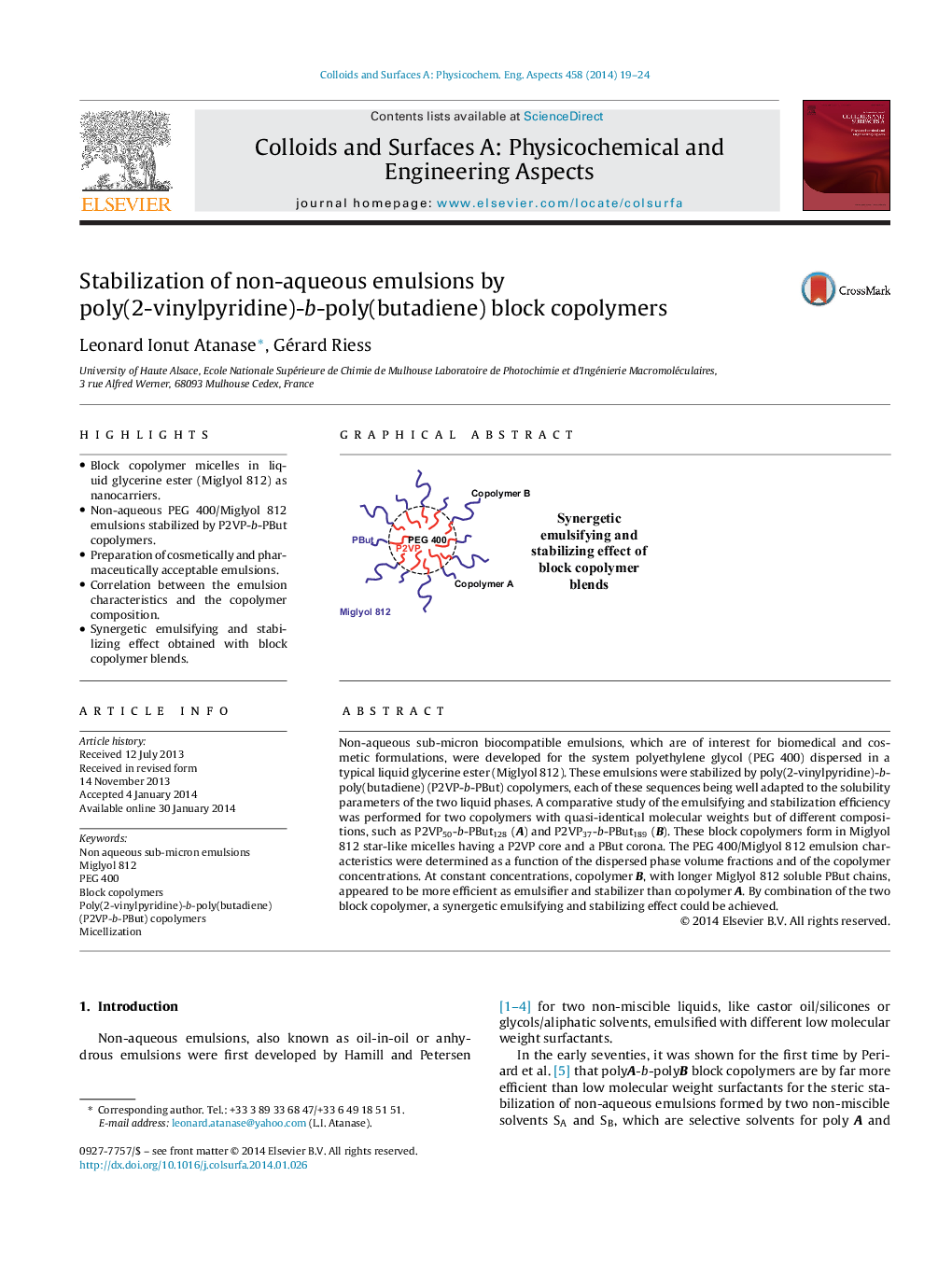| Article ID | Journal | Published Year | Pages | File Type |
|---|---|---|---|---|
| 592729 | Colloids and Surfaces A: Physicochemical and Engineering Aspects | 2014 | 6 Pages |
•Block copolymer micelles in liquid glycerine ester (Miglyol 812) as nanocarriers.•Non-aqueous PEG 400/Miglyol 812 emulsions stabilized by P2VP-b-PBut copolymers.•Preparation of cosmetically and pharmaceutically acceptable emulsions.•Correlation between the emulsion characteristics and the copolymer composition.•Synergetic emulsifying and stabilizing effect obtained with block copolymer blends.
Non-aqueous sub-micron biocompatible emulsions, which are of interest for biomedical and cosmetic formulations, were developed for the system polyethylene glycol (PEG 400) dispersed in a typical liquid glycerine ester (Miglyol 812). These emulsions were stabilized by poly(2-vinylpyridine)-b-poly(butadiene) (P2VP-b-PBut) copolymers, each of these sequences being well adapted to the solubility parameters of the two liquid phases. A comparative study of the emulsifying and stabilization efficiency was performed for two copolymers with quasi-identical molecular weights but of different compositions, such as P2VP50-b-PBut128 (A) and P2VP37-b-PBut189 (B). These block copolymers form in Miglyol 812 star-like micelles having a P2VP core and a PBut corona. The PEG 400/Miglyol 812 emulsion characteristics were determined as a function of the dispersed phase volume fractions and of the copolymer concentrations. At constant concentrations, copolymer B, with longer Miglyol 812 soluble PBut chains, appeared to be more efficient as emulsifier and stabilizer than copolymer A. By combination of the two block copolymer, a synergetic emulsifying and stabilizing effect could be achieved.
Graphical abstractFigure optionsDownload full-size imageDownload as PowerPoint slide
